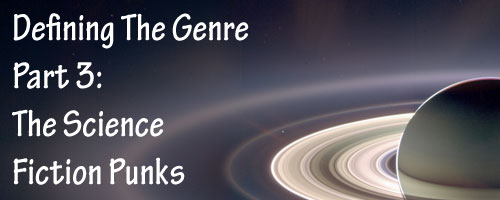
This week, in my most ambitious article to date, we’ll be exploring the rather hectic and rebellious worlds of the Punks. Not just any run of the mill punks, but those punks which are directly related to science fiction: Cyberpunk, Biopunk, and Steampunk. While my focus tends to be literary, today I’ll be spicing it up with movie references as well, as sometimes the visual can make a bigger impression than reading the definition. My goal here is to define what each of these subgenres is, what their principle topics and issues are, and let you know where you can find not only more information, but also which books are in these subgenres. Also it will be interesting to note how these subgenres of science fiction actually have left the literary arena and have become not just subgenres, but subcultures. Let’s begin.
Cyberpunk
Cyberpunk. The very word elicits mental images of rebellion, hackers, high tech computer systems, and gritty surroundings. Well, for me it does, anyway. Cyberpunk is a science fiction subgenre “that blends high technology with outlaw culture.” Cyberpunk settings are usually gritty underworld with an abundance of technology practically coming out of our ears, and in some cases even literally coming out of our ears. Perhaps brains would be more accurate. It’s just as easy to walk down a street in an alternate cyberspace as it is to walk down the actual physical street, and society has usually taken a sharp turn for the worse (Hafner and Markoff, 9). According to Smith and Wood in their book Online Communications, cyberpunk “is an ironic response to contemporary life — a play on the notion that a computerized society is necessarily a better one.” (198).
A prototype for perhaps all cyber- and biopunk can easily be seen in Mary Shelley’s Frankenstein. Using “used” body parts and science outside of the constraints of the law, not only penal but human law, to create the living from the dead (as grotesque as it may seem), is in many ways the essence of cyberpunk. Other examples of early cyberpunk work includes, and is certainly not limited to: Red Harvest by Dashiell Hammett, Last and First Men by Olaf Stapledon, The Big Sleep by Raymond Chandler, A Clockwork Orange by Anthony Burgess, and Do Androids Dream of Electric Sleep by Philip K. Dick (which later became the movie Blade Runner) (McCaffrey, 17-20).
The beginning of the literary movement that we can best recognize as cyberpunk really got going in the 1980’s. The real question of the cyberpunk genre/movement is what happens machines and technology are taken too far? Where will we be when the line blurs between humanity and machine? Reading the work from this time, it’s clear to see the future will be a grim, socially stratified affair (Smith & Wood, 197-198). This movement can best be seen in the works of William Gibson, Bruce Sterling, John Shirley, Rudy Rucker, Michael Swanwick, Pat Cadigan, Lewis Shiner, Richard Kadrey, and Neal Stephenson.
While the movement may have started with books, some of the most memorable examples of cyberpunk come in movie form. Movies such as Blade Runner, The Terminator, and The Matrix are all examples of the genre. In all three there is some melding of human and machine. In Blade Runner androids become so human that they are almost indistinguishable from their flesh and blood counterparts and are outlawed. You can clearly see the gritty underworld and the apathy to the technology that is overly abundant. In The Terminator, you have the theme of human rebellion against a cybernetic assassin. Man and machine are engineered together for the extinction of the human race. The Matrix (I am NOT talking about the sequels, and you can’t make me) shows what happens when the machine gets a mind of its own, feeding off of humans for its own survival. All three of these movies have the basic elements of the cyberpunk movement: advanced technology, rebellion, social stratification (the rich always seem to get richer, while the poor get poorer), and the question, what happens when the machines become smarter than we are?
Biopunk
Like all good movements, cyberpunk generated derivatives, one of which is biopunk. Biopunk is in many ways the opposite of cyberpunk. Cyberpunk delves into the idea of melding machine with man, viewing the human part largely as “meat” that isn’t good enough as it is, so must be cybernetically and mechanically enhanced. Biopunk, however, while acknowledging that humans are far from perfect, begins looking at the problem from a genetic and molecular level rather than attaching foreign devices (Dinello, 180). Also “biopunk embraces the physical and explores our growing confusion about the value and integrity of our bodies in a genetically mutated machine world.” (220)
Authors known for their work in biopunk include: Michael Marshall Smith, Paul Di Filippo, Paul J. McAuley, Greg Bear, and Octavia Butler (220). Again this is when Mary Shelley’s Frankenstein should be mentioned. Creating a new living being out of the discarded and dead flesh of others, while terrifying, is in many ways what biopunk is about. Creating more for the body out of the body rather than through the addition of machines, all while not relinquishing the gritty rebellious nature of cyberpunk. Examples of movies for visual reference include Gattaca, Code 46, The Island, and the Resident Evil movies (“Biopunk Summary”). These movies all deal with how technology and science affect the human flesh without adding anything mechanical to it, but using science instead to “enhance” or change. In Gattaca the main character uses another man’s fingerprints, urine, skin, blood and hair to pass himself off as “regular” when he is marked a genetic invalid. In The Island people are cloned so that when their own bodies wear out they have replacement parts. Vincent in Gattaca is rebelling against a system that discriminates based on your genes at birth, and Jordan Two Delta and Lincoln Six Echo fight their imprisonment and their fates in The Island.
Just like in cyberpunk you see the underbelly of society, but in many cases it’s based less on social class and more on genetic class. While it again has less to do with enhancing oneself through the use of mechanic prosthetics, the theme is genetic enhancement and discrimination. Throughout there is also the theme constant in its parent subgenre, rebellion. At some point genetics is used to rebel against the established system. In Margaret Atwood’s Oryx and Crake, Crake uses his skills in genetic engineering to create a whole new species of human using bits and pieces from other animals and plants, only to destroy the human race with a deadly and unstoppable virus because he didn’t believe in the modern conventions. Whether it’s Doctor Frankenstein’s jigsaw of a man or Crake’s new race, the implications of biopunk are both mesmerizing and a little terrifying. Biopunk is the cautionary tale of where humans can go if they step over that invisible line between trying to help mankind and trying to play God.
Steampunk
Last up on our list of science fiction punks is steampunk. While cyber- and biopunk give us a glimpse of our possible futures, steampunk embodies a nostalgia for early science fiction, but without losing that gritty feeling of rebellion. In fact one could even say that the subgenre itself is its own rebellion against the modern conventions and practices of science fiction. The name steampunk is a reference to the steam engine, which is the icon to which the rest of the genre is modeled. Often set either in the past or alternate histories, the basis is generally modern (or relatively modern) technology sprouting from older methods. The era that best exemplifies the subgenre is right about the time of Victorian England, and whether it is actually set there or not, that era is the framework for most alternative worlds or futures. (Westfahl, 130-131)
While the term steampunk didn’t hit lips until the 1980s, early influences of the genre can be seen in Charles Dickens’s lofty description of the weaving London streets and dark underbelly of society as well as in the work of H.G. Wells and Jules Verne (Clute and Grant, 895). Movies such as The Prestige, Sleepy Hollow, The Time Machine, Van Helsing, Hellboy, The Rocketeer, and The Wild Wild West (yeah, I said it, I’m sorry!) are visual representations of this genre. In all of these you see an example of where technology might have gone. When viewing these movies, its clear to see that steampunk isn’t just a history show; it’s flashy, rebellious, beautiful, and gritty all at the same time. In that way it still embodies everything that makes it one of the “punks.”
Steampunk, maybe more so than the other genres, has also really taken a foothold in modern society. Perhaps not in a global, wide reaching way, but there are certainly communities that find the style aesthetically pleasing, and try to incorporate the style into their everyday lives. Modern technology can be given the steampunk make over, even though it still runs on modern technology, it has the feel of nostalgia to it. An example of a group of artists bringing this to life is Kinetic Steam Works. The bounds are as limitless as the imagination, and I feel that steampunk is a refreshing look at what might have been, both in the real world, and in literature.
Conclusion
To be a punk you have to have the proper attitude, a perfectly improper attitude. Cyber-, bio-, and steampunk are in many ways very different, but they have the same principal ideology: “Down with the Establishment, Up with the Revolution.” Whether we’re changing the technology, or the technology is changing us, the punks are the rebellious teens of the Science Fiction genre. While they have their roots in far older works, each emerged as an entity of its own in the 80s and I personally believe that these subgenres have potential in the future.
Cyberpunk Books:
- The Artificial Kid
by Bruce Sterling
- Neuromancer
by William Gibson
- Little Heroes
by Norman Spinrad
- THE NIGHT MAYOR
by Kim Newman
- Bad Voltage
by Jonathan Littell
- Snow Crash
by Neal Stephenson
- Jennifer Government
by Max Barry
Biopunk Books:
- Ribofunk
by Paul Di Filippo
- American Meat
and Reality Bites
by Stuart Moore
- Holy Fire
by Bruce Sterling
- Brave New World
by Aldous Huxley
- Oryx and Crake
by Margaret Atwood
- Frek and the Elixir
by Rudy Rucker
- Blood Music
by Greg Bear
Steampunk Books:
- Automated Alice
by Jeff Noon
- Pasquale’s Angel
by Paul J. McAuley
- The Affinity Bridge
by George Mann
- Anno Dracula
by Kim Newman
- The Difference Engine
by William Gibson & Bruce Sterling
- The Devil in Amber
by Mark Gatiss
- The Anubis Gates
by Tim Powers
Resources:
- “Biopunk Summary.” Book Rag. 9 Sept. 2008 http://www.bookrags.com/wiki/biopunk.
- Clute, John, and John Grant. The Encyclopedia of Fantasy. Boston: Saint Martin’s Griffin, 1999. 895.
- Dinello, Daniel. Technophobia! : Science Fiction Visions of Posthuman Technology. New York: University of Texas P, 2006.
- Hafner, Katie, and John Markoff. Cyberpunk : Outlaws and Hackers on the Computer Frontier. New York: Simon & Schuster, Incorporated, 1996. p 9
- McCaffery, Larry, ed. Storming the Reality Studio : A Casebook of Cyberpunk and Postmodern Science Fiction. New York: Duke UP, 1992.
- Westfahl, Gary, ed. World Weavers : Globalization, Science Fiction, and the Cybernetic Revolution. New York: Hong Kong UP, 2006.
- Wood, Andrew F., and Matthew J. Smith. Online Communication : Linking Technology, Identity and Culture. Danbury: Lawrence Erlbaum Associates, Incorporated, 2004. 197-99.


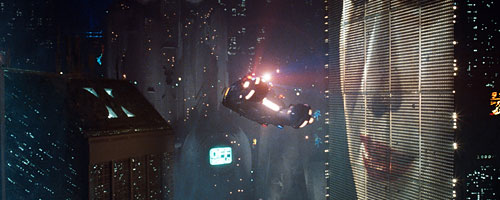

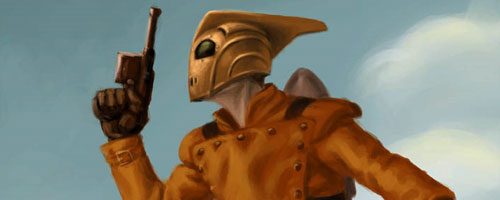
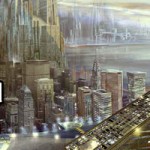


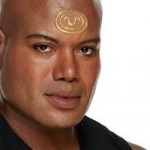

Pingback: Fandomania’s 10 Top Posts of 2008 | Fandomania